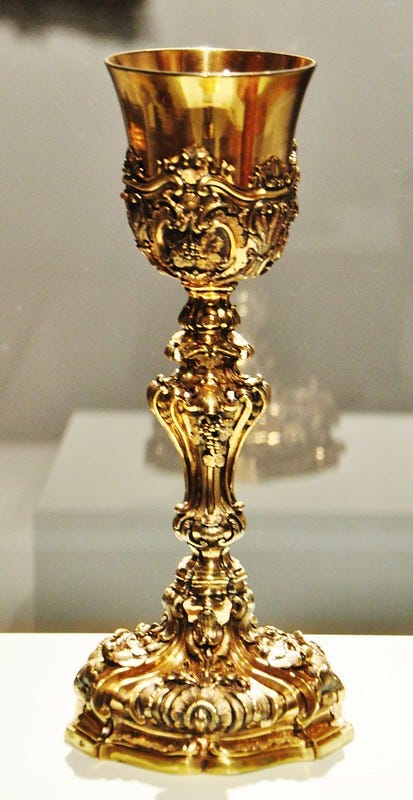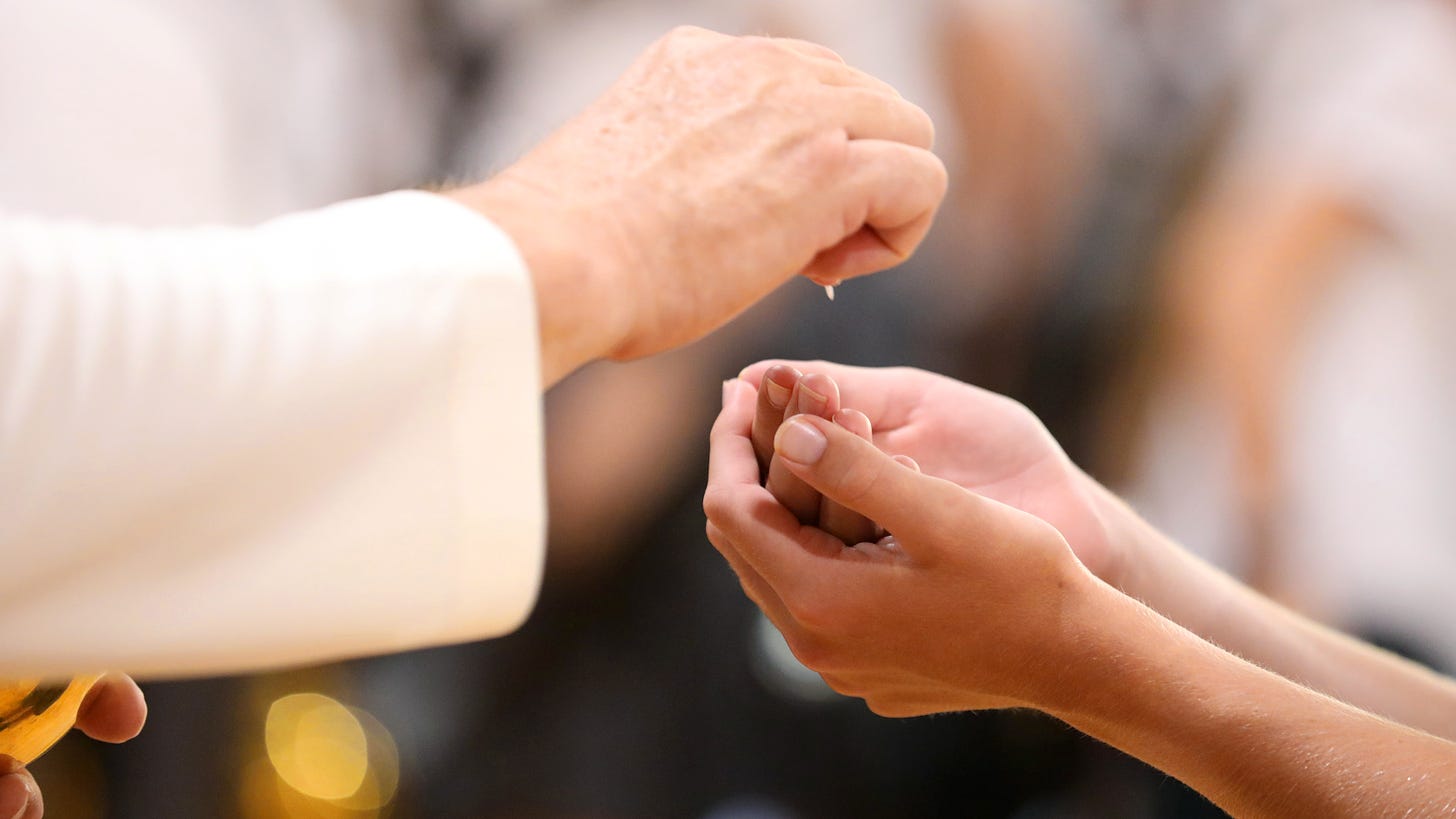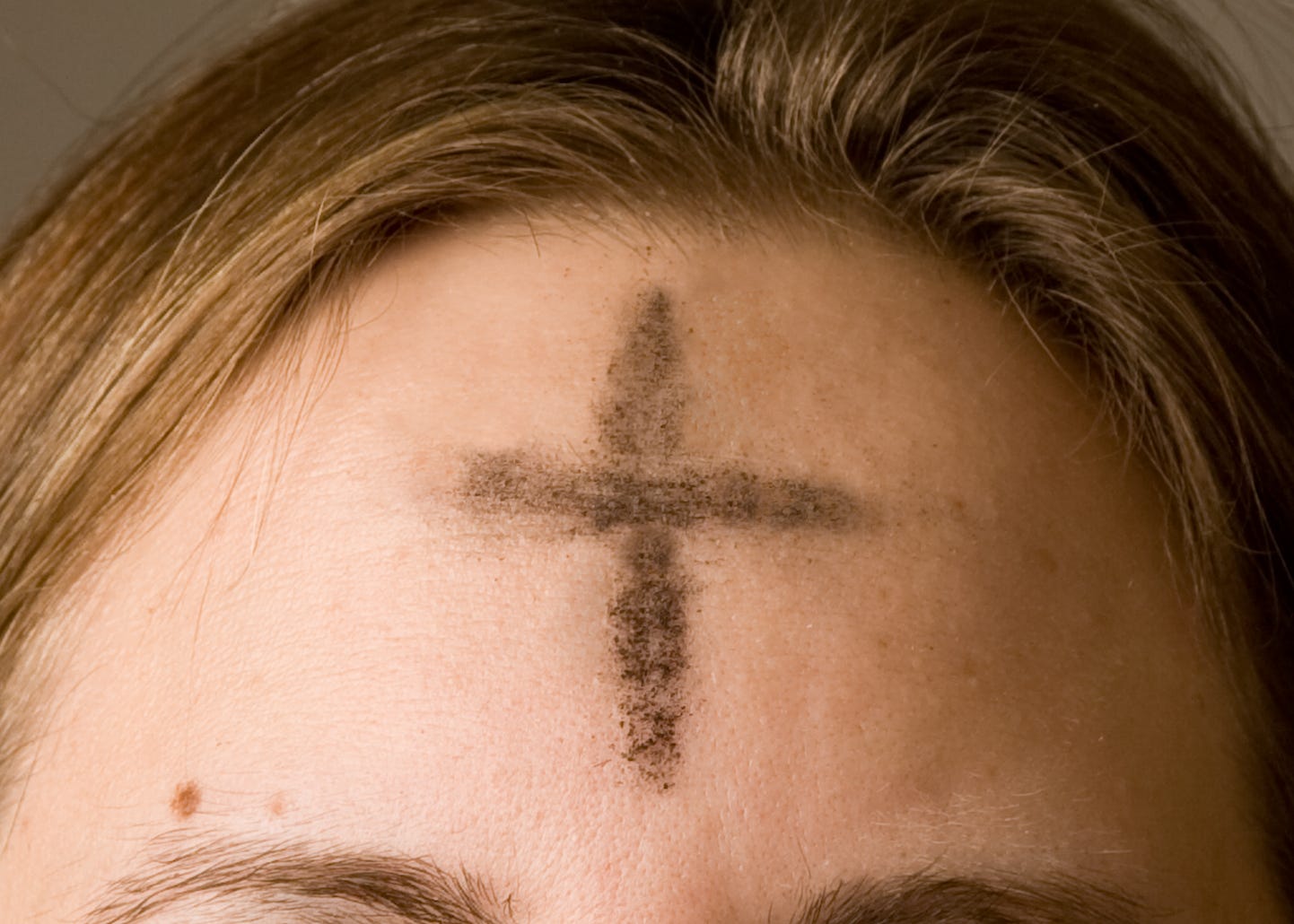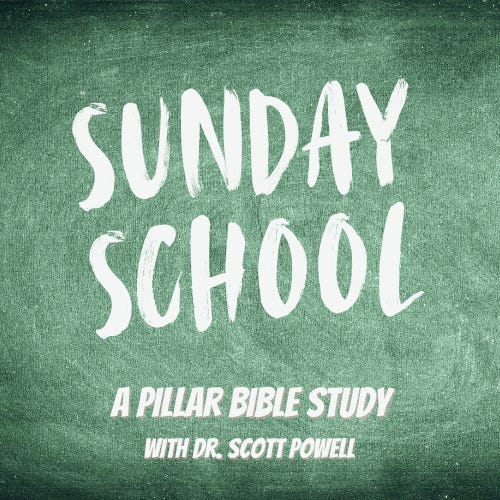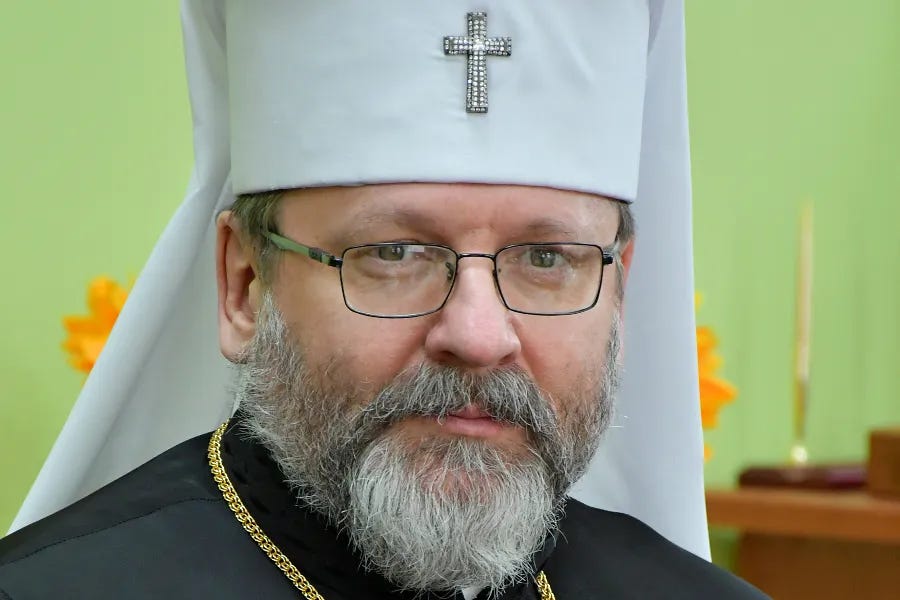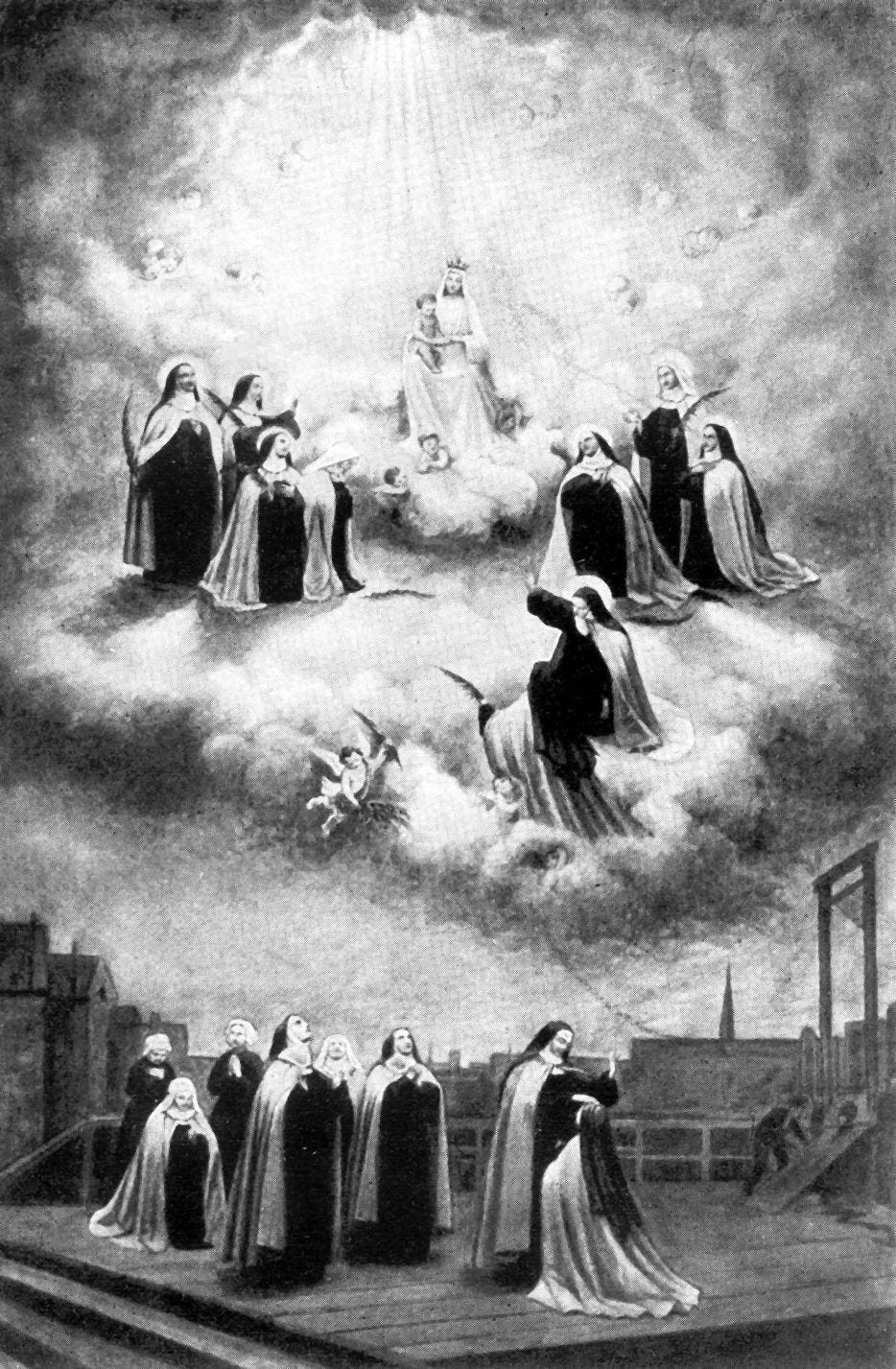It’s been just over a year since Catholic dioceses in the United States began restoring the public celebration of Masses, following the onset of the coronavirus pandemic, which halted public events throughout the country last spring.
As Masses gradually resumed in the months that followed, things looked different. People donned masks, practiced social distancing, and engaged in extra sanitation measures. But there were also changes to the liturgy itself - outdoor Masses became common at some parishes, the Precious Blood was not offered at Communion, and the Sign of Peace was practiced with social distancing or omitted altogether.
Looking back at a year of modified Masses, we at The Pillar wondered whether we can expect to see liturgies return to normal, or whether some of the modified practices might stick around. And who has the authority to make that decision? The local pastor? The bishop? The Vatican?
We asked some experts: Fr. James Bradley, a canon law professor at The Catholic University of America who has done significant research on liturgical law, and Brian MacMichael, director of the Office of Worship in the Diocese of Fort Wayne-South Bend.
Here’s what they told us:
The Precious Blood is not offered at Communion
Fr. James Bradley: Although the experience of many people in the United States is to have the option to receive Holy Communion in both kinds, the normative practice in the Roman Rite is to receive under the form of bread alone. The diocesan bishop, in the first place, can judge when Holy Communion may be administered in both kinds, and it will be largely down to each bishop to determine when this practice may safely return. At the same time, like many of these things, the abrupt change in practice as a result of the pandemic provides a good opportunity to pause, and carefully look again at the Church’s liturgical norms, and then to reimplement them in an ever more faithful way.
Is this practice likely to continue post-pandemic?
Brian MacMichael: I think some places will probably continue to offer just Hosts after Covid for various reasons – maybe some EMHCs drop out permanently, or a critical mass at the parish shies away from the practice due to heightened concern about germs. Or maybe the pastor wanted to move in this direction beforehand and this gives the opportunity to make it permanent. Or maybe it’s simply viewed as more practical or quicker. But I imagine most parishes that used to offer the chalice will probably restore the practice when they're able….Certainly during flu seasons we’ve reminded our parishes that they can shelve the practice temporarily if deemed prudent. And a good number of places already did not distribute from the chalice prior to the pandemic.
Catholics are asked to receive the host on the hand, not on the tongue
Fr. James Bradley: In many places it has been determined that Holy Communion should not be given on the tongue during the pandemic. The Holy See has made very clear that this must be considered a provisional norm, and that such measures expire when the situation returns to normal. Historically, there are examples of similar situations going back to at least Pope Benedict XIV. But these have always been only for extreme circumstances, such as war or plague. As most of the faithful have the choice to receive Holy Communion in the hand in most circumstances, if for instance they are concerned for their health, it seems appropriate and just to restore true freedom in this choice to the faithful, as soon as it is safely possible.
Is this practice likely to continue post-pandemic?
Brian MacMichael: I think such a shift is less likely than the chalice issue, since the ability to receive on the tongue is clearly upheld by the Church for any Mass under normal circumstances. I suppose a certain degree of heightened fear about germs in the wake of the pandemic might cause a pastor or a community to advocate for reception on the hand. But I think ultimately the idea of mandating hand reception long term just isn’t viable.
The Sign of Peace is downplayed or omitted
Fr. James Bradley: As the Congregation for Divine Worship and the Discipline of the Sacraments made clear in a 2014 document on the Sign of Peace, this is an optional rite, and there are times and places where it is not fitting. Clearly this is the case at the moment with social distancing measures in place. The Sign of Peace is a gesture that has great beauty and significance attached to it when it is properly done. At the same time - like other things we’ve had to set aside in the pandemic - if pastors decide to return to this practice once the measures subside, it seems opportune to revisit its purpose and to ensure that it is carried out in a sober manner and in a way that reveals its true purpose as a liturgical sign of communion, not as a kind of secular or familiar greeting.
Is this practice likely to continue post-pandemic?
Brian MacMichael: I doubt the sign of peace will disappear long term, since many of the faithful are very attached to it – probably more so than to something like reception from the chalice. Though I could envision a more lasting preference for non-physical greetings during the sign of peace on the part of the people in pews.
Extra Masses are offered at Christmas and Easter
Fr. James Bradley: As a norm, Priests can offer Mass once a day, but they are allowed to do so twice on a weekday if needed, and even three times on a Sunday. In rare circumstances the bishop can ask the Holy See for permission to extend this to four times, but this is only ever granted for concrete reasons. Most dioceses in the United States do not seem to have this permission. So, again, when things subside, the temporary provisions made will need to return to normal. This is actually a good thing for the Priest and for the parish as a whole, because although it is a supreme privilege to offer the Mass, the value of a rich liturgical celebration, complete with the chants, and the full rites and ceremonies, is often lost when a parish schedule becomes so full that each Mass is limited by a time slot, or by other merely practical considerations. Plus, we all like to see a full church!
Is this practice likely to continue post-pandemic?
Brian MacMichael: I imagine most dioceses already had an allowance for three Masses per priest on Christmas and Easter pre-pandemic.
Outdoor Masses are routinely celebrated
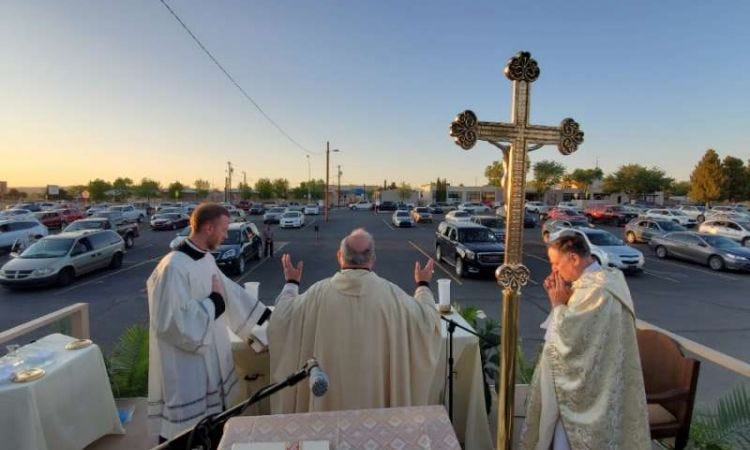
Fr. James Bradley: The church building is the most appropriate place for divine worship, because it is a place set aside for this purpose, and a sacramental sign of the presence of Christ in the community and to the world. Sometimes Mass can be said in another place, even outside, but this must always be done worthily and well. Sadly, some of the practices we have seen during the pandemic have lacked all of the care and attention that the Mass demands. Extreme circumstances sometimes call for extreme measures, but we are still speaking about the Most Holy Eucharist! The building itself also aids the active participation of the faithful in the liturgical action; it is a sign and symbol of the Church and of Christ. So although there have been examples of Mass outside during the pandemic, these celebrations are necessarily not ideal, and a return to the use of church buildings and properly dedicated altars can only be a good thing.
Is this practice likely to continue post-pandemic?
Brian MacMichael: Not really, since the necessity would presumably have passed... Bishops have to give permission for Masses to occur outside a sacred place (e.g., outside the parish church or a chapel), and it’s only supposed to be done out of a certain degree of necessity, as determined by the bishop. Examples might include Masses at nursing homes, for scouting gatherings, or an event too large for the church…Even if a parish has a combination of environment and climate that has made outdoor Masses a really enjoyable experience for many during the pandemic, the parish church is where the actual altar and tabernacle are; it is the official sacred place designated for these liturgical activities, and I don't think that sense has changed. The church itself is also far more practical in terms of Mass supplies, seating, sound, etc. One thing in particular that many dioceses have historically not permitted outdoors is weddings; however, I think exceptions have been made during the pandemic. But I don't see that continuing as a blanket permission either, since it was out of necessity.
Sprinkling, rather than tracing, ashes on the foreheads of the faithful on Ash Wednesday
Fr. James Bradley: The way most of us are used to receiving ashes on Ash Wednesday, in the form of a Cross on the forehead, is actually not the usual way this rite is carried out in the Roman liturgy. In most places, the ash is sprinkled on the top of the head. Certainly, then, this practice is preferable to the use of a q-tip or some other instrument. Either way, hopefully we can return to the usual customs of our place next year.
Is this practice likely to continue post-pandemic?
Brian MacMichael: Probably not, unless some places really liked doing it this way. A main reason is that American Catholics tend to want that sacramental (the ashes) visible on Ash Wednesday. And part of the practical reason why it probably wouldn’t happen is that (at least according to my understanding) most liturgical ashes sold in the U.S. are mixed with a bit of oil so that they adhere to foreheads. Conversely, sprinkled ashes should be very dry, like dust...A pastor could decide to sprinkle every year going forward, though in the U.S. he’d probably be known as “that guy” in his diocese, since the practice remains relatively foreign. A bishop or conference could probably say that it should be carried out in such-and-such a way for a good reason, as was done this year.

